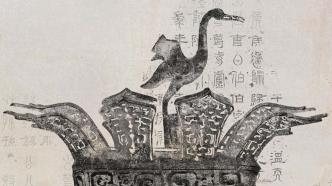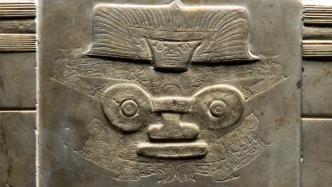
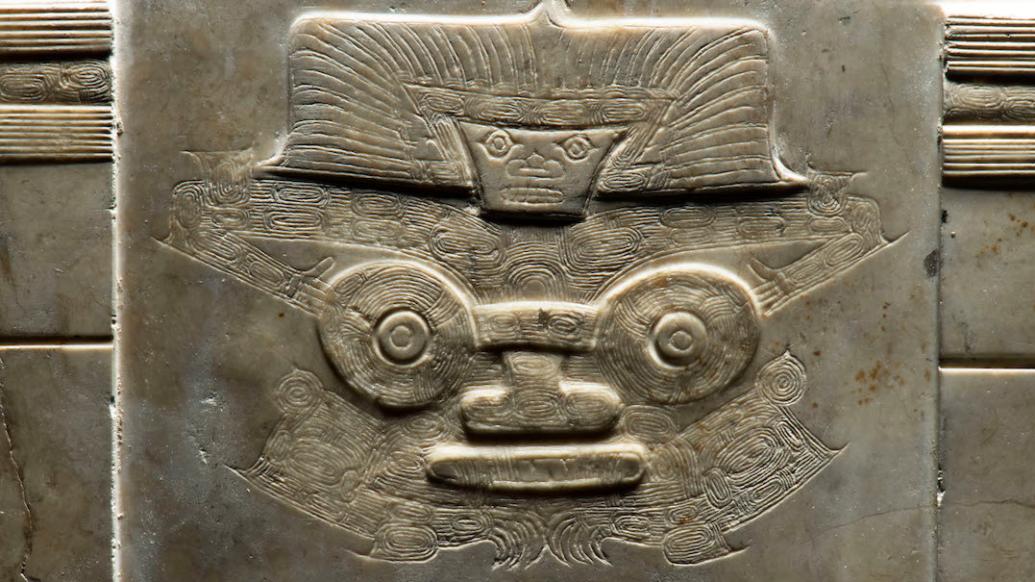
The Paper learned that after the Shanghai Museum held the first exhibition of the "Why China" cultural relics and archeology exhibition series last year, "Zhaizi China", next week will usher in the second exhibition of the series, "Songze·Liangzhu Civilization and Archeology Exhibition". This exhibition will focus on the greatest achievements in the first peak of civilization development represented by Songze Culture and Liangzhu Culture from 5800 to 4300 years ago. Among them, the jade wares of the Liangzhu culture that will be exhibited are one of the biggest highlights of this exhibition.
On the afternoon of June 16, "Paper News·Ancient Art" visited the exhibition site of Shanghai Bobo, and saw the largest and most exquisite "Cong King", "Yue King" and "Jade Scepter" unearthed from the Liangzhu ancient city site Waiting for the unpacking and exhibition of cultural relics. It is reported that this "Cong King" is also the treasure of the Zhejiang Provincial Museum, and this time it will only be exhibited at the Shanghai Expo for 20 days.
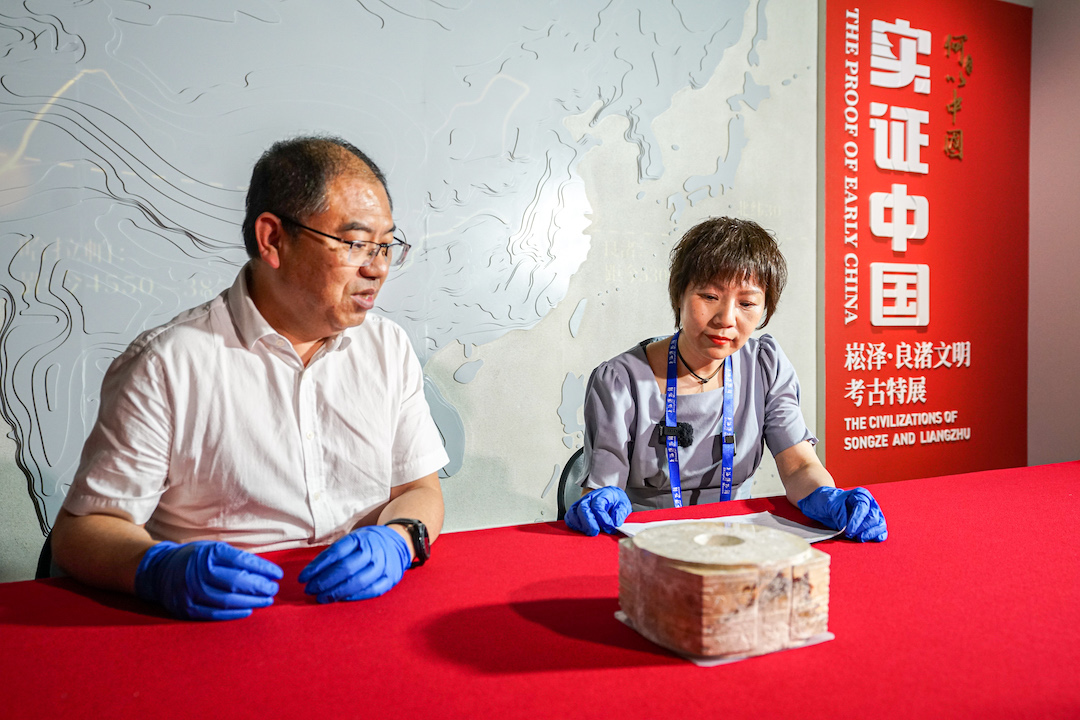
Jade Cong Delivery Site
According to reports, this exhibition will bring together more than 350 sets of unearthed cultural relics collected by 19 museums and archaeological institutions across the country. It will tell the story of "civilization" from the four major sections of ancient country, rice farming, handicraft industry and jade, and present the prehistoric culture and art of the lower reaches of the Yangtze River. charm. Chu Xiaobo, curator of the Shanghai Museum, said that since Shanghai Bo opened the "Why China" cultural relics and archeology exhibition series last year, it has been very popular. Turn your attention from the middle and lower reaches of the Yellow River back to our lower reaches of the Yangtze River, focusing on the prehistoric civilization of Songze Culture and Liangzhu Culture. "The earliest state in East Asia was also born here, so the name of this exhibition is Empirical China, which intends to tell the wonderful story of the 5,000-year history of Chinese civilization through the exhibition."
Songze Culture, named after the Songze site discovered in Qingpu District, Shanghai, is about 5,800-5,300 years ago. It inherited the Majiabang Culture and the Liangzhu Culture, and is a Neolithic culture in the lower reaches of the Yangtze River around Taihu Lake. An important stage of development; Lingjiatan culture is about 5800-5300 years ago. It is the largest and best-preserved Neolithic central settlement in the Chaohu Lake basin in the lower reaches of the Yangtze River so far. Its jade making and jade use are highly developed, and it is known as the China's "Three Prehistoric Jade Centers" are also one of the sources of Liangzhu civilization; Liangzhu culture is 5300-4300 years ago, and it is a Neolithic period developed after the Majiabang culture and Songze culture in the area around Taihu Lake in the lower reaches of the Yangtze River Late culture already possessed the early state form.
"The Songze·Liangzhu Civilization Archaeological Exhibition will specifically display archaeological artifacts from the Songze Culture, Lingjiatan Culture, and Liangzhu Culture. What is the connotation of juxtaposing them from an archaeological perspective? Chen Jie, deputy director of the Shanghai Museum, told The Paper News, the Songze here refers to the Songze era. The lower reaches of the Yangtze River with Taihu Lake as the center are considered to be within the scope of the Songze cultural circle. The Lingjiatan culture also belongs to this era. Many of its artifacts have the same characteristics as the Songze culture. It is very similar, so it is one of the connotations of the entire Songze cultural circle. Liangzhu culture is a late Neolithic culture developed after Songze culture. The development height of Liangzhu civilization did not arise out of thin air. Through this exhibition It can reflect a process of the development of early civilization in the lower reaches of the Yangtze River."
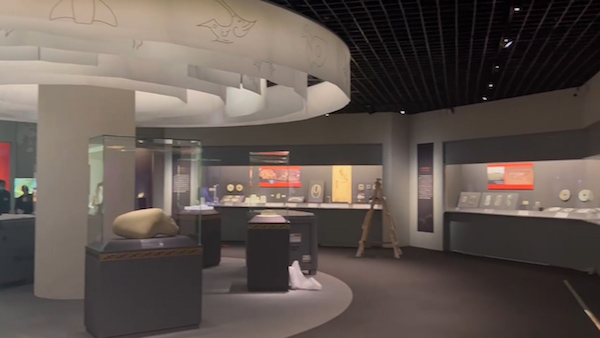
The exhibition is under construction
The exhibition is located in the first exhibition hall on the first floor of the Shanghai Museum. Most of the cultural relics have been safely placed in the display cabinets, and the site is still in the tense stage of exhibition arrangement. According to Zhou Yun, a librarian at the Archaeological Research Department of the Shanghai Museum, nearly half of the exhibits are newly unearthed artifacts, and about one third are exhibited for the first time. And this time, there has also been a breakthrough in the exhibition design, and the audience will be able to appreciate the subtle details of the cultural relics at a very close distance.
What will be exhibited this afternoon are the jade cong, the jade axe with a combination of gods and humans and animal faces, and the jade scepter with a combination of upsetting, all of which are important cultural relics unearthed in 1986 from Tomb No. 12 at the Fanshan site in Liangzhu, Zhejiang.
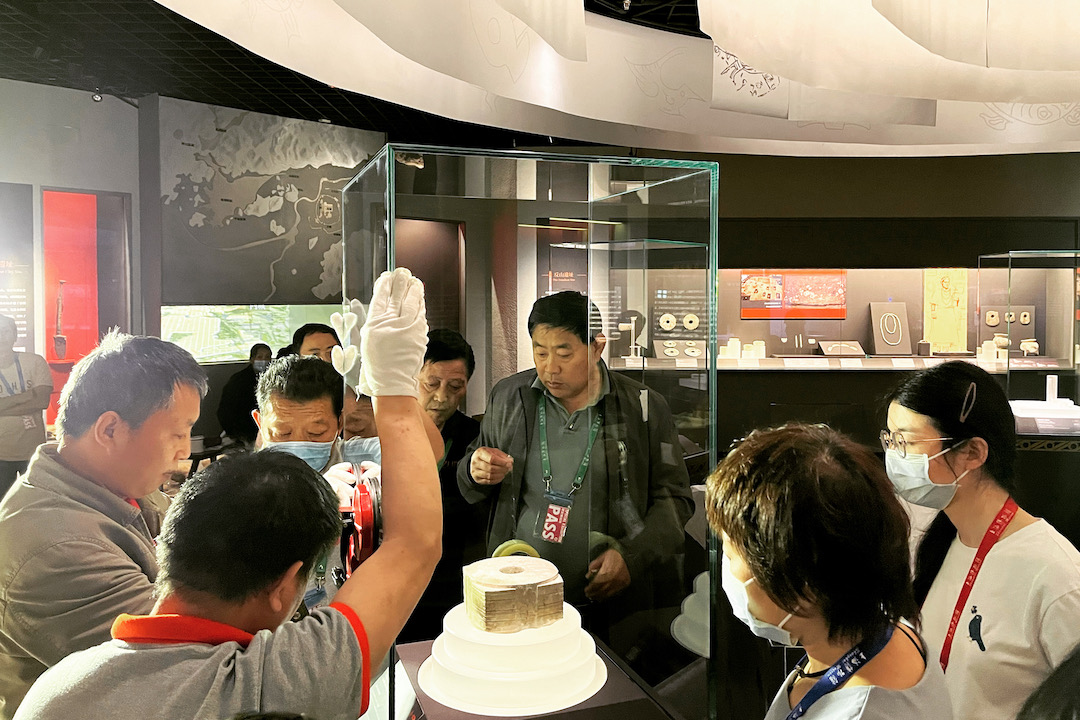
Shanghai Museum, "King Cong" entered the cabinet
The Fanshan Site is an important site of the Liangzhu Ancient City Site. Fanshan cemetery is a high-grade cemetery built on an independent high platform artificially built. Among the tombs discovered so far, tomb No. 12 is located in the middle of the south row, and it is the highest-grade tomb among them. The emblems of "God, Man and Beast" all come from this tomb, and experts speculate that it should be the royal tomb.

Jade Cong Liangzhu Culture Unearthed from Tomb No. 12 at Fanshan Site, Zhejiang Province in 1986 (M12:98) Collection of Zhejiang Provincial Museum
Among them, this jade cong weighs about 6.5 kilograms. It is the largest and most exquisitely carved jade cong so far, and it can be called the "King of Cong". In the straight grooves on the four sides of the cong body, a complete picture of the face of a god, man and animal (divine emblem) is engraved on the top and bottom, reflecting the exquisite micro-carving skills of the Liangzhu culture. Human and animal facial pattern.
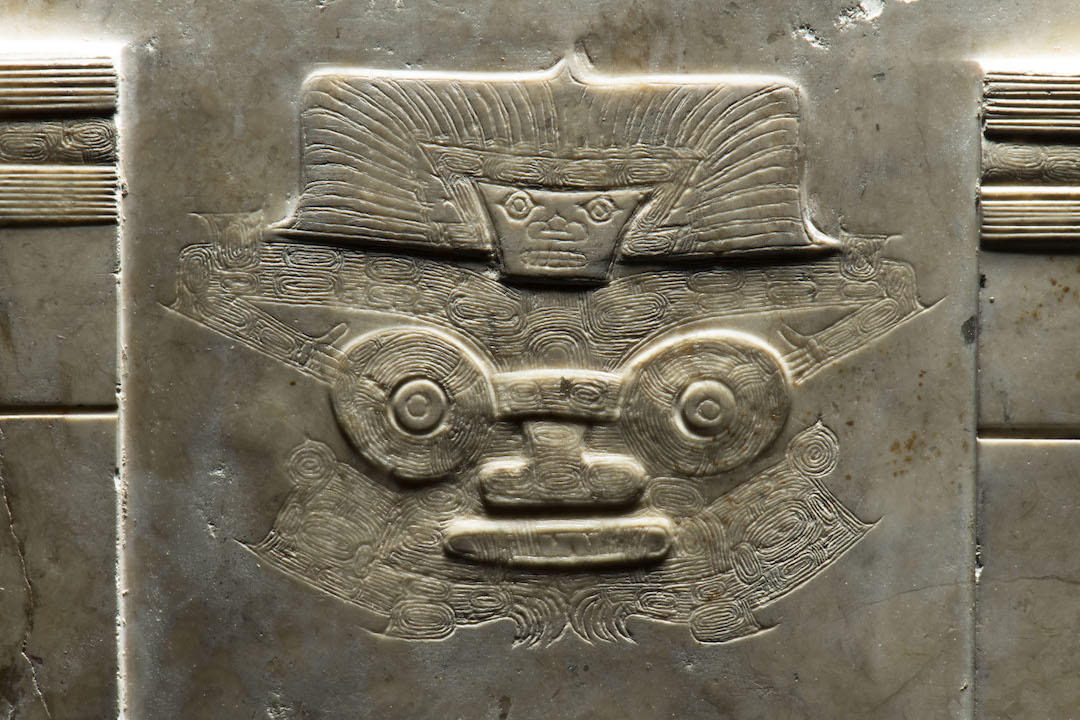
The complete face pattern of gods, humans and animals carved on the jade cong (that is, the emblem of the gods)
Cong is the most important and representative jade ware of Liangzhu Culture. This kind of cylinder-shaped jade, which is round inside and square outside, contains the original cosmology of "round sky and earth".
There are different opinions about the function of the cong. Some scholars believe that the cong is a magic weapon that reaches the heavens, while others believe that the cong is a symbol of religious power.
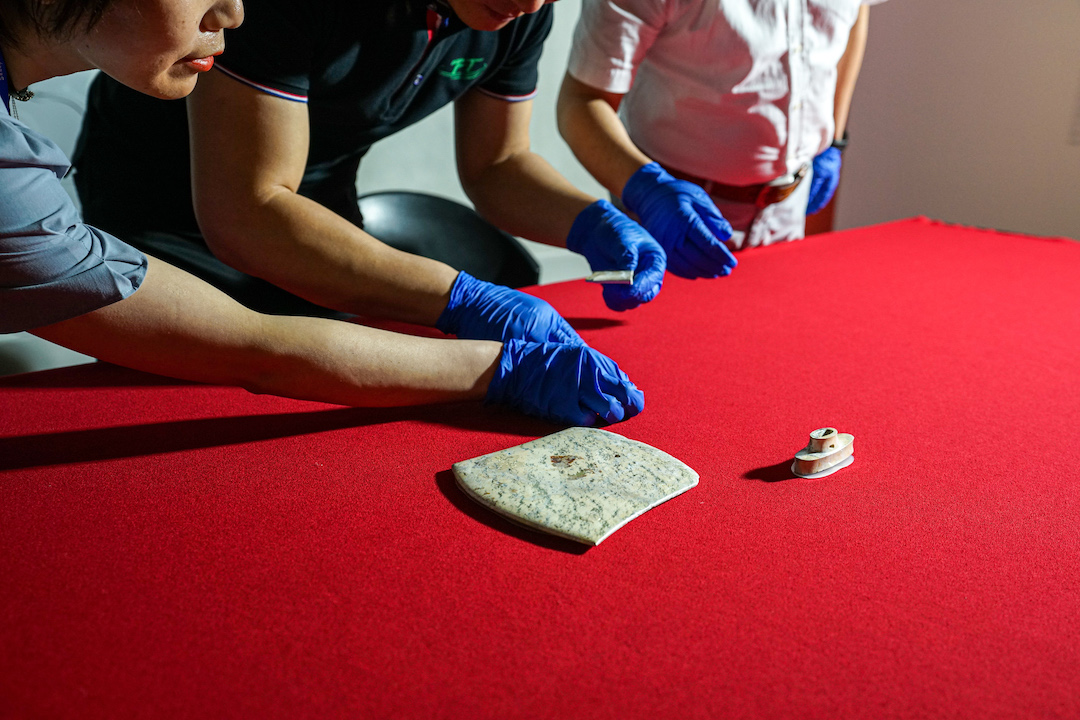
"Yue Wang" point delivery
This jade battle-axe combined with god-man-beast pattern and shell-head pattern is currently the only jade battle-axe engraved with divine emblems and bird patterns, and is known as the "king of battle-axes". When the jade ax was unearthed, it was located in the left hand of the owner of the tomb. Only the body and the upper and lower ends of the handle and the upsetting were left, and the organic handle in the middle had decayed and was invisible.

Jade axe with animal-faced grain and shell pattern, Liangzhu Culture (about 5300-4300 years ago), unearthed from Tomb No. 12 of Fanshan Site, Zhejiang Province in 1986, collected by Zhejiang Provincial Museum
Jade axe is also an important item among Liangzhu jade wares. It is considered to be a symbol of royal power or military command power, and it is mainly unearthed from high-level male tombs. The jade axe unearthed from Tomb No. 12 in Fanshan, which symbolizes royal power, has images engraved on both sides of the blade corners. The upper corner is engraved with a complete god, man and animal face pattern, and the lower corner is engraved with bird patterns. The image is consistent with "Cong King".
Liangzhu has the reputation of "the country of jade", and these complex or simple patterns of gods, men and animals are the most important motifs of Liangzhu jade decoration. The upper part of the complete deity-man-beast pattern is the image of a deity and man wearing a feather crown, the middle part is the face of a beast with round eyes and fangs, and the lower part is the sharp claws of a bird. What kind of meaning do they have? General experts believe that this kind of divine emblem is the most intuitive expression of the worship of gods in Liangzhu culture.
Chen Jie said that it is generally believed that jade ax and scepter are symbols of secular power, while cong and bi may have something to do with the religious beliefs at that time. For the burial, this series of utensils is a symbol of the identity of the owner of Fanshan Tomb No. 12, showing the king's dignity of the tomb owner, and it also shows that there has been obvious hierarchical differentiation at that time.
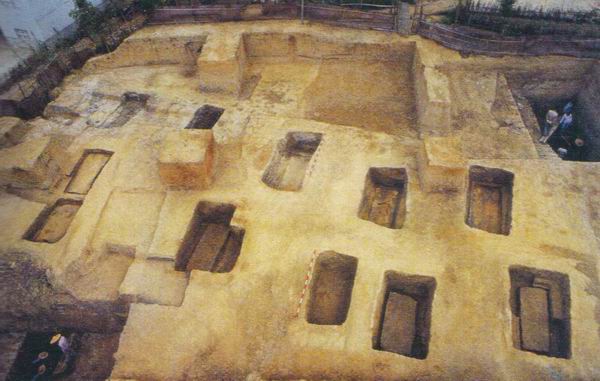
Fanshan Cemetery
In addition to high-level tombs, the earliest city ruins and the world's earliest water conservancy project ruins were found especially in the Liangzhu ancient city site, all of which proved the 5,000-year history of Chinese civilization from an archaeological perspective.
In addition to jades from the Liangzhu Culture, the exhibition will also display ivory scepters unearthed from the Fuquanshan site in Shanghai, pottery vases with human heads from the Songze Culture, and stone pigs from the Lingjiatan Culture. According to Shanghai Expo, more wonderful cultural relics in the exhibition will be unveiled on the opening day. The exhibition will last from June 20th to October 8th.
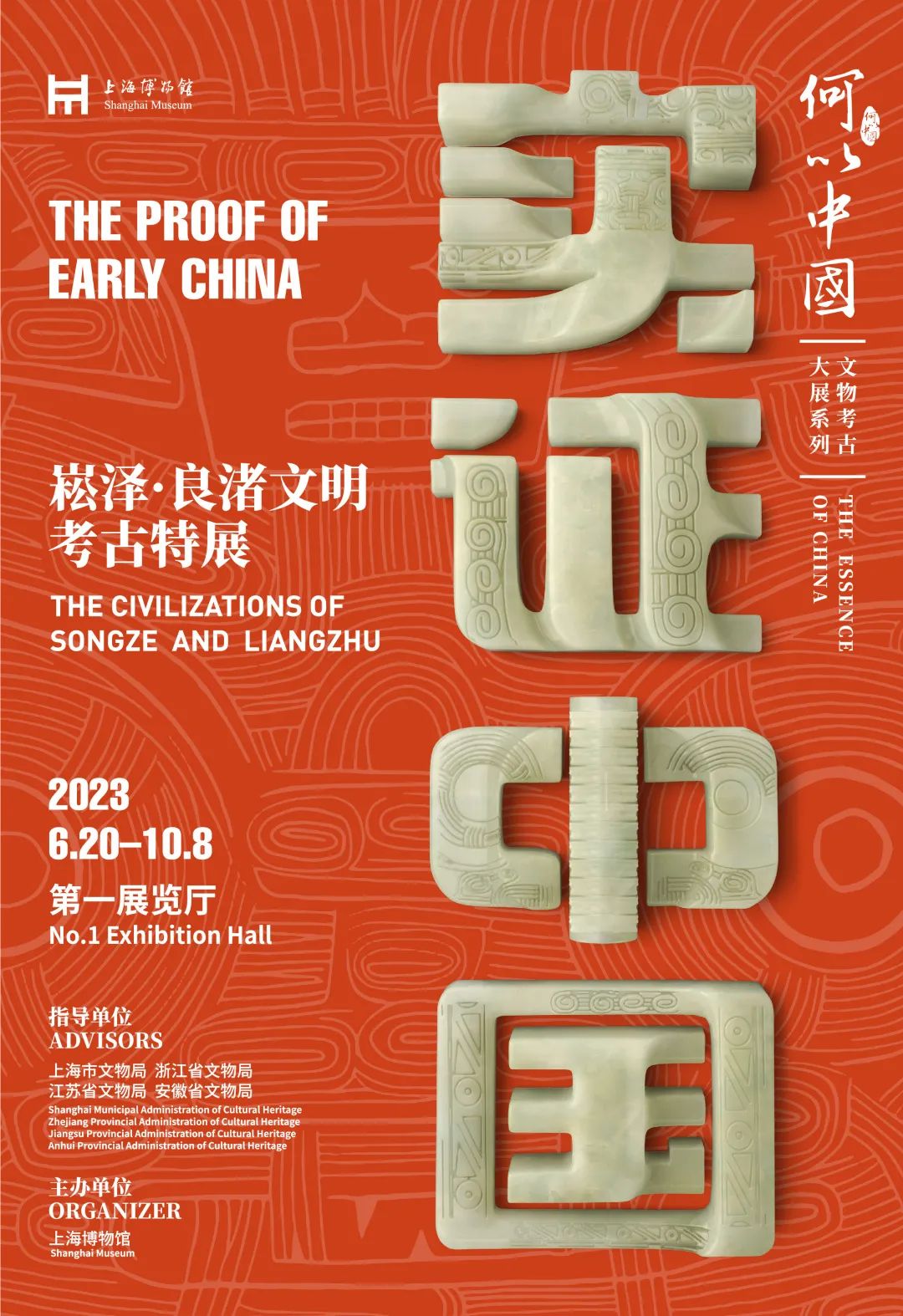
exhibition poster

